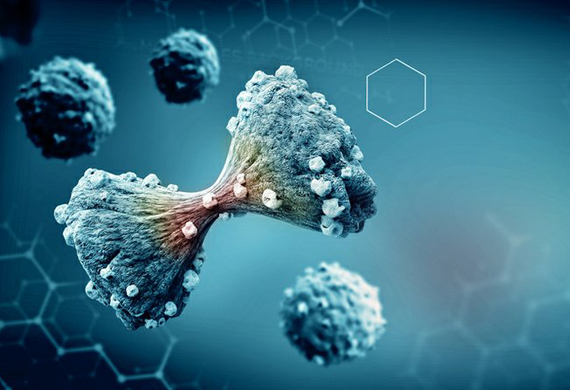
World Cancer Day & How Technology can Work Wonders
By: Anamika Sahu, Managing Editor | Thursday, 4 February 2021
It’s World Cancer Day today. Hence let’s talk about where India stands in the global map and how technologies can assist in enabling a cancer-free world. World Health Organization (WHO) mentions that annually one in six deaths happen due to cancer and around 70 percent of deaths are recorded in developing and underdeveloped countries. In fact, chronic obstructive pulmonary disease (COPD) which is a long-term lung defect, commonly found in India, is a major risk factor for lung cancer. It is one of the most common cancers in the world constituting 6.8 percent of all new cancer cases and 9.3 percent of all cancer related deaths in India. It is in fact estimated that every year, over one percent of people having COPD develop lung cancer globally.
A report by National Cancer Registry Programme (NCRP) estimates that the number of cancer cases in India will likely touch 15.7 lakh by 2025, from 13.9 lakh in 2020. This is nearly a 20 percent increase. Among many kinds of cancer, the most common among women in India are breast cancer, cervical cancer, uterine cancer, ovarian cancer, and colorectal cancer. Out of all the types of cancers, breast cancer has become a major health concern among Indian cities, especially in the metros like Delhi, Bengaluru, and Chennai. These cities together account for more than a fourth of all female cancers.
The fact that only 10 percent of breast cancers could be hereditary, more than 90 percent are related to lifestyle factors such as obesity, alcohol consumption, smoking, unhealthy diet, exposure to chemicals & radiations, and feminine hormones, late menopause and others. What’s more unfortunate is that some are born with a genetically inherited high risk for specific cancer, which makes the disease more likely.
Data shows that in India, younger women between 40-42 years of age are affected as compared to 55-60 years in the west. Hence regular self-breast examination is important for early detection and cure. And if one notices any lump, they must see an oncologist to determine the nature of the lump. Doctors say that while not all lumps are malignant, any form of lump should not be ignored.
Technology as a Measure to Cure
A study also reveals that cervical cancer contributes around six-29 percent of cancers in women in India. But the good news is that another study says that over 50,000 cervical cancer cases can be prevented in India by 2050. All it needs is early detection and a little enlightenment.
While the pandemic had been bad on health, both mentally and physically, the risk amplified due to restriction of movement and fear of COVID contraction when visiting hospitals. Doctors reveal that they have noted 47 percent drop in women cancer screening due to COVID, while only 25 percent women are aware of disease, preventive care measures. Doctors are even worried about the potential rise in breast cancer in women due to smaller number of women coming for screening than before the COVID-19 pandemic.
However, today technology is helping deal with such crucial times and how doctors can do early diagnosis and treatment of cancer. Modern technology and newer modalities of treatment have revolutionized cancer treatment and diagnosis for the benefit of the patients. Newer modalities of treatment like targeted therapy & immune-therapy help doctors control and cure the disease. This ultimately is leading towards increasing the number of cancer survivors. Simple histo pathology to markers and molecular tests have revolutionized the way cancer is diagnosed. On the other hand, simple, basic chemotherapy is either replaced or added by target therapy and immune-therapy. Organ conservation surgeries are replacing mutilating and radical surgeries, and newer radiation techniques like image guided and stereotatic have impacted positively on side effects and efficiency of radiation.
Non-invasive cancer diagnostics is found to be an increasing choice of interest due to its painless or minimal pain method of diagnostic and more accountable results. Even next generation sequencing is expected to play an important role. AI is seen as the next revolution in the cancer treatment. Especially post the pandemic that interrupted the service system. This indeed has paved the way for integrated AI applications in cancer screening and treatment. A recent Niti Aayog policy paper on the National Strategy for AI also seconds this, and states that cancer screening and treatment is an area where AI provides tremendous scope for targeted large-scale interventions.
However, there lies a huge gap between the new cancer diagnoses every year and the service providers. It is said that for an annual incidence of over one million new cancer diagnoses every year, India barely has 2,000 pathologists experienced in oncology, and even less than 500 pathologists who could be considered as expert onco-pathologists. This is indeed a huge gap and technologies like AI and ML can be a solution to bridge it. Just like Niti Aayog and the government sees AI and ML as an immune to the every growing need, many healthcare organizations and oncologists are already exploring this opportunity.
Integrating AI will not only expedite diagnosis, but even accuracy, aid clinical decision-making and lead to better medical outcomes. AI surely has the power to reduce health disparities. It can also improve surgical outcomes, especially for complex cancer procedures. However, there is a need for deep learning on surgery to achieve great advancements in medical outcomes. But we might have to wait for a very long time for AI to become more widely applicable and acceptable in the healthcare industry.






